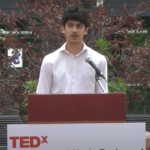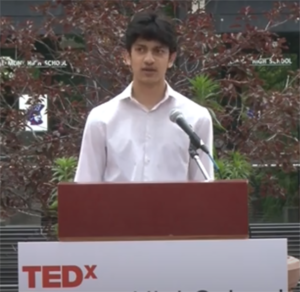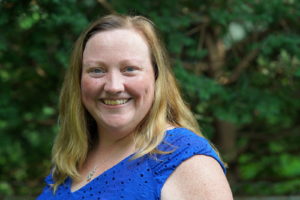
By Aditya Jain
As a high school intern with State Representative David Rogers’ office in the summer of 2020, I learned about the legislative process through Massachusetts Bill S9, the Climate Roadmap bill, which was signed into law in March 2021. During the summer of 2021, I researched equity in Massachusetts clean energy policies, interviewing experts in Massachusetts policies on clean energy access, technology, and workforce trends.
What is Environmental Justice?
The United States Environmental Protection Agency (EPA) defines environmental justice as the “fair treatment and meaningful involvement of all people regardless of race, color, national origin, or income, with respect to the development, implementation, and enforcement of environmental laws, regulations, and policies.”
Throughout the 20th century, discriminatory policies nationwide located toxic industrial zones and waste sites near minority communities. A 2005 study found that hazardous sites and facilities are still disproportionately concentrated in communities of color and low-income communities in Massachusetts.
In the past year, environmental justice policy has moved forward. At the federal level, the Biden-Harris administration has created a new deputy director for energy justice position within the Department of Energy and has pledged to deliver 40% of benefits of climate investments to disadvantaged communities. At the state level, the Baker-Polito administration has announced a $1.6 million investment in job entry in the offshore wind industry and has required developers to include a diversity, equity, and inclusion plan in their bids.
The Climate Roadmap bill brings environmental justice principles into state law for the first time. However, many economic and social issues must be addressed for more comprehensive environmental justice in the energy sector.
Barriers to Participation
Current clean energy efforts in Massachusetts are not reaching across demographic lines. Although Massachusetts is ranked first in the nation for electrical efficiency by the American Council for an Energy-Efficient Economy, these savings are not evenly distributed. A study conducted by the Applied Economics Clinic in Arlington found that lower-income communities in Massachusetts receive lower efficiency savings compared to their wealthier counterparts.
There is a “tenant-landlord disconnect” preventing owners from taking advantage of state incentive programs like MassSave, according to Beverly Craig, senior program manager and member of the Environmental Justice Task Force at the Massachusetts Clean Energy Center. While tenants benefit from energy efficiency through lower electricity bills, landlords and property owners are the ones spending money on projects and navigating the installation process. As a result, landlords and property owners have little incentive to provide clean energy to low-income tenants.
In addition, people whose first language is not English “find it difficult to navigate a complicated program that’s mostly entirely offered in English,” notes Amy Boyd, director of policy at the Acadia Center, a New England climate and energy nonprofit. Boyd recommends “targeting specific areas that we know have been underserved and that we know are overburdened by the fossil fuel and extractive economy today.”
However, local environmental justice groups could use census tract data to identify buildings for state programs. Craig notes that using data on tenants’ finances can allow communities to take advantage of MassSave benefits including free clean energy and energy efficiency installations. Outreach programs could also offer information in residents’ preferred language.
Low-Income Housing
Massachusetts’ residential buildings are among the oldest in the country. Many homes harbor safety and health hazards such as knob-and-tube wiring, vermiculite, radon, and asbestos. Low-income communities also tend to have the “oldest, most poorly maintained infrastructure, in our urban centers,” according to Isaac Baker, cofounder and co-CEO of Resonant Energy.
The cost of renovations is a barrier for low-income households seeking clean energy. To obtain a permit for a solar clean energy installation, a home needs to first meet health and safety code standards. Homeowners may need to spend tens of thousands of dollars on upgrades and repairs on their property before installing improvements like solar panels or heat pumps. Boyd explained that the cost of remediation is not covered through traditional clean energy incentive programs like MassSave or MassLean “because [remediation is] not delivering any additional savings.”
Boyd says it is imperative to address these expenses, also called pre-weatherization barriers, with direct funding. Without this work, communities are isolated from clean and efficient energy and “condemned … to have to be among the last consumers stuck … paying huge percentages of the sunk capital costs” through higher energy bills.
State energy programs should automatically provide grants for pre-weatherization through the normal screening process for clean energy and energy efficiency projects, agrees Kim Vermeer, president and founder of Urban Habitat Initiatives. Vermeer adds that providing this “piggybacked funding” for clean energy while residents are “planning for other repairs, upgrades and retrofits is the best and most efficient way to use everybody’s resources, whether it’s time, money, personnel, construction cost, hassle for tenants … it’s better if it can all be done at once, right?”
Poor infrastructure can also be improved with modifications to residential building codes. Boyd suggests that having “the concept of efficiency built into the health code, or other codes that define whether something can be rented out and offered on the market” can help deal “with the split-incentive issue of renters not being able to convince their landlords to upgrade and weatherize.”
By 2050, “there will be 2.5 million buildings [in Massachusetts],” 80% of which already exist, according to Craig, and “anything new needs to be ultra-low energy, because that’s where it’s easy and the costs are low.” In Massachusetts, the Department of Housing and Community Development (DHCD) awards federal low-income housing tax credits to developers through a competitive application process called the Qualified Action Plan (QAP). Including requirements and incentives for rigorous energy efficiency and clean energy standards to access this funding can ensure that “the resident benefits from a higher-quality, healthier indoor environment in their home,” said Vermeer.
Future Economic Equity
The clean energy sector is growing fast. Massachusetts clean energy industry jobs have grown by 86% since 2010 according to a 2019 report by the Massachusetts Clean Energy Center report.
Today, clean energy jobs make up 3.1% of all jobs in Massachusetts. However, according to a report by the Solar Energy Industries Association, women represent only 26.3% of the solar workforce, and Asian, Hispanic, Latino, and African-American workers make up just 33% of the solar workforce. Senior executive-level positions are entirely held by white men at the average solar firm. As Isaac Baker points out, these disparities are not at all “representative of the populations where solar is being installed.”
One solution is to create inclusive workforces through training. Recent initiatives in the Massachusetts Next-Generation Climate Law are an important first step, but designing workforce training programs in low-income and minority communities has specific requirements. For example, Craig states that “a purely college-based [workforce training] program is not always that helpful” in low-income communities. Instead, initiatives should offer more flexible opportunities through on-the-job training, technical trades programs, and vocational high schools. Another option is “bridge to clean energy jobs” programs which support applicants changing careers by offering services such as childcare, training in math skills, and help obtaining drivers’ licenses and other documentation.
With offshore wind growing in Massachusetts, it is also important to consider how large-scale projects are subcontracted. In 2014–2019, less than 1% of all municipal contracts went to minority-owned businesses in Boston, a city that is over 50% non-white, according to a WGBH report. Recent efforts by the Baker-Polito administration to require developers to implement workforce diversity plans should be continued for any future large-scale projects. Isaac Baker states that policies should ensure that “billions of dollars worth of work that’s going to happen over the next decade” is subcontracted “to communities or color, low-income communities, … minority- and women-owned businesses, and not just … white males with whom [the] decision makers at those developers might have the easist time finding, accessing, or interfacing with.”
Aditya Jain is a student at Belmont High School.





Sorry, the comment form is closed at this time.